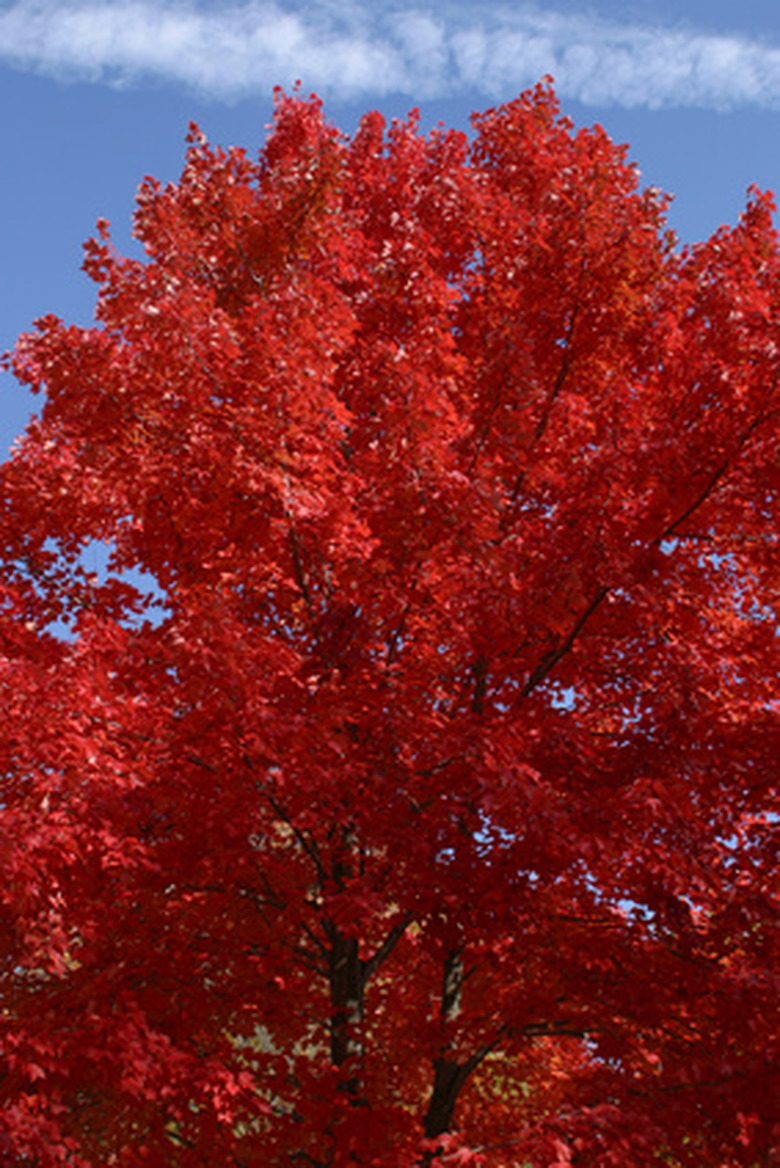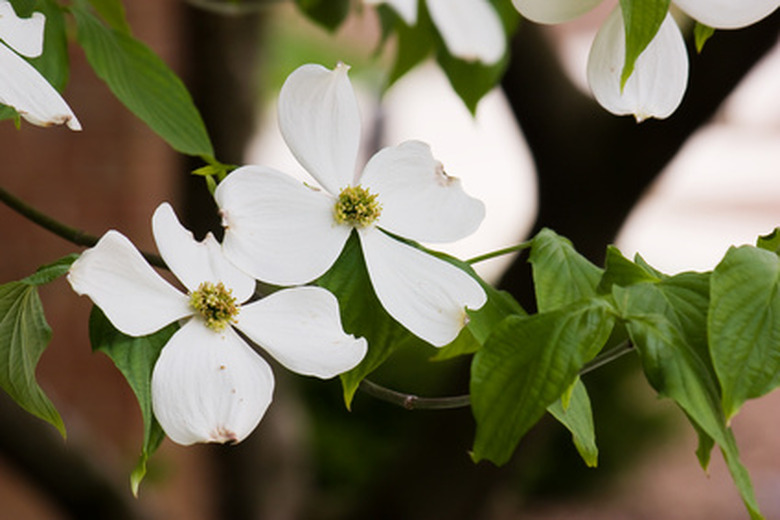Common Trees In New Jersey
Trees might not be the first thing that comes to mind when you think of New Jersey, the most densely populated state in the U.S. But from its rural pine forests to urban tree-shaded sidewalks, New Jersey is home to many tree species. In fact, the Garden State is one of the few states to have two official trees–a state tree, the Northern red oak, and a memorial tree, the flowering dogwood.
Northern Red Oak
New Jersey's state tree, "Quercus rubra," is one of the most common oak trees on the East Coast. Its range extends from Minnesota down to southern Alabama and up into Nova Scotia, where it is the northernmost native oak, according to the U.S. Agriculture Department's Forest Service. The northern red oak's spreading, symmetrical shape and scarlet fall color makes it a popular tree for New Jersey yards and streetscapes while its acorns provide food for squirrels, turkey, deer and other North American wildlife.
Flowering Dogwood
Attractive dogwood trees are so common throughout the U.S. that they are considered state trees not only in New Jersey, but also in Virginia and Missouri. "Cornus florida" is native to the eastern U.S., including New Jersey. A small deciduous tree with delicate branches and large, green leaves, the dogwood is most recognizable for its flower-like bracts–four specialized, rounded leaves that surround small, inconspicuous flowers. Bract colors range from deep to light pink, pure white or white tinged with green. In the fall, dogwood foliage turns deep red to purple, and clusters of red berries appear in winter.
- Trees might not be the first thing that comes to mind when you think of New Jersey, the most densely populated state in the U.S.
- But from its rural pine forests to urban tree-shaded sidewalks, New Jersey is home to many tree species.
- The northern red oak’s spreading, symmetrical shape and scarlet fall color makes it a popular tree for New Jersey yards and streetscapes while its acorns provide food for squirrels, turkey, deer and other North American wildlife.
Pitch Pine
Pitch pine, "Pinus rigida," is the most common pine tree in the rural Pine Barrens of southern New Jersey, but can also be found in coastal and Appalachian ranges throughout the eastern U.S. With its heavy bark and scruffy appearance, the evergreen tree is especially capable of surviving forest fires and is also known as torch pine. Because pitch pines contain so much resin, their wood is often used for railroad ties, construction and fuel. The pines grow to 60 feet tall on average and have yellow-green needles that occur in bundles of three. Pitch pine seeds are a staple in the diet of nuthatches, chickadees and several other birds.
Tulip Tree
Often falsely called a poplar, the tulip tree is actually a type of deciduous magnolia native to many parts of the Northeast. In New Jersey, "Liriodendron tulipifera" frequently grows in areas outside of the Pine Barrens, or pine forests. Tulip trees are easily distinguishable in Northern landscapes by their bright green lobed leaves and the buttery yellow cup-shaped flowers that cover their branches in spring. Like many of New Jersey's most common trees, the tulip tree has an attractive pyramidal shape that makes it popular in landscaping. It's also well-known for its brilliant yellow fall foliage. Hummingbirds, finches and other birds are attracted to the nectar in tulip tree flowers.
- Pitch pine, "Pinus rigida," is the most common pine tree in the rural Pine Barrens of southern New Jersey, but can also be found in coastal and Appalachian ranges throughout the eastern U.S. With its heavy bark and scruffy appearance, the evergreen tree is especially capable of surviving forest fires and is also known as torch pine.
White Oak
White oaks are native to the entire eastern U.S. but, like the northern red oak, are particularly common in New Jersey landscapes. "Quercus alba" is a full, spreading oak tree with delicate, flaking bark that is noticeably lighter than other oaks, more of a white-gray color than the typical brown. Leaves are dark green on the top side, lighter green underneath and heavily lobed. The cut wood of white oak turns a warm yellow color, making it popular for flooring. Several of the most famous white oaks call New Jersey home, including the Mercer Oak, a 300-year-old tree that overlooked Princeton Battlefield State Park before it was downed by strong winds in 2000, and the Washington Oak, another protected tree located in Princeton Battlefield.

